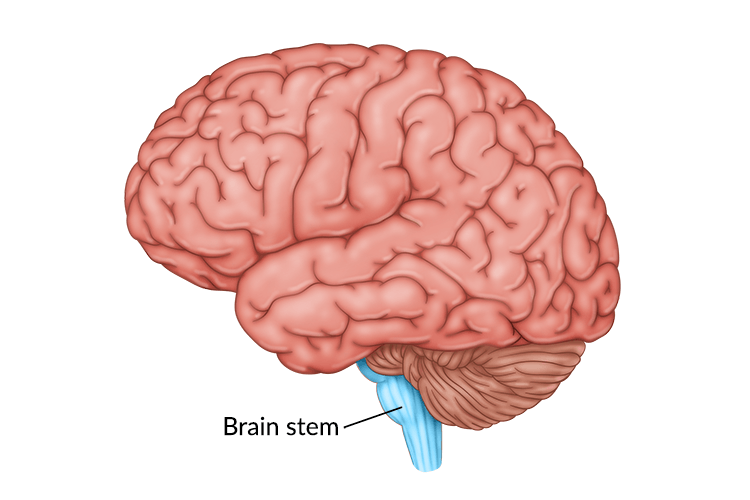The human’s nerve system is indeed a complex system that enables humans to live and distinguish it from other mammals. Part of the nerve system including the brainstem plays a role in human life. In this DoctorOnCall’s article, we will be talking more about brain stem and what are some disorders associated with it.
First thing first, what exactly is a brain stem? Is it the same as the stem you see in flowers or trees? Well, the brain stem does have a stalk-like shape and it is located on the base of the human brain, slightly above the spinal cord. Brain stem possesses twelve nerves that originated from the brain. These nerves allow different body functions such as the balance when walking or standing, body reflexes, the heart rate, breathing system, facial movements and sensation, swallowing and hearing process. Any problems occurring to the brainstem could cause disturbance to a person’s life. You should talk to healthcare professionals if you have enquiries regarding the brain stem issues or when you spot someone having symptoms similar to any of the disorders. There are several brain stem disorders that is considered common, for example:
1) Stroke
Stroke is caused by problems causing the blood flowing to the brain is hindered. One of the most common types of strokes is Wallenberg’s syndrome. It is a stroke occurring in the brain stem blood vessels, either the vertebral or posterior inferior cerebellar artery. Generally, a person with brain stem stroke can manifest various symptoms such as dizziness, double vision, slurred speech, imbalance or losing consciousness.
2) Tumour
Most tumours of the brain stem are gliomas. Gliomas is a type of tumour coming from the cells in the brain that works to support and protect the brain’s neurons. Although gliomas can occur in any part of the brain, it is difficult to treat when it involves the brain stem since most cases are with poor outcomes. It is likely to occur in children compared to adults.
3) Injury
Injury to the brain stem can be caused by many kinds of injuries, basically any injuries that could hurt other body parts, may also affect the brain stem. Brain stem injury usually exhibits mild symptoms at first glance but a person’s health condition may deteriorate gradually over time as it alters the heart function, breathing system, blood flow and body temperature regulation. Common symptoms include dizziness, nausea, vomiting, coughing, problems with swallowing food, slurred speech, blurred vision and losing consciousness. Other symptoms that may arise are insomnia, paralysis, breathing difficulty, losing ability to smell, unable to control bladder and repetitive eye-jerk movement.
4) Multiple sclerosis
This is a disease affecting the white matter of the brain. White matter is located in a deeper area of the brain and functions as protecting the nerve fibres from injury. Damages to the white matter such as in multiple sclerosis slows down the nerve system to the point of causing dysfunction. Symptoms of multiple sclerosis in the brainstem may also be similar when this disorder occurs in other parts of the brain. Examples of symptoms are impairment of control movement, slurred speech, imbalance, sleeping problems, facial weakness, hearing impairments and swallowing problems.
5) Brain stem death
A person is said to have brain stem death when he or she is unable to carry out any brain stem function, losing potential for consciousness and capacity to breathe permanently. Ventilators are usually used as a last resort to support their life. In some countries, a person may be pronounced as passed away when it is proved the brain stem function is permanently lost.
Know about hajj vaccination package




